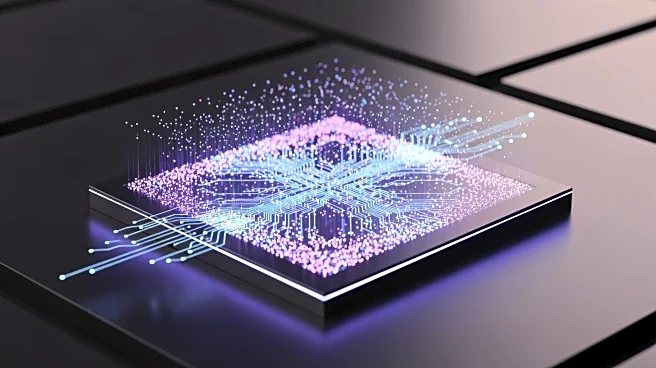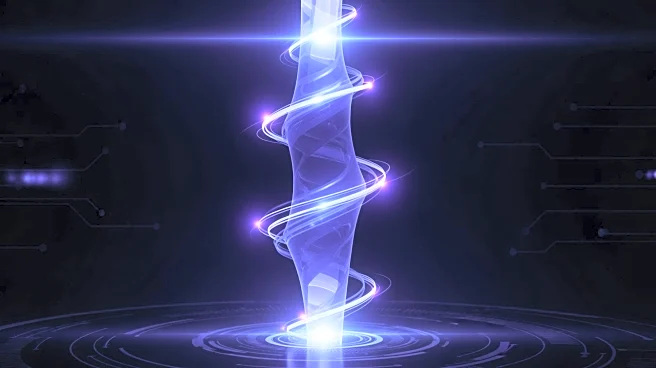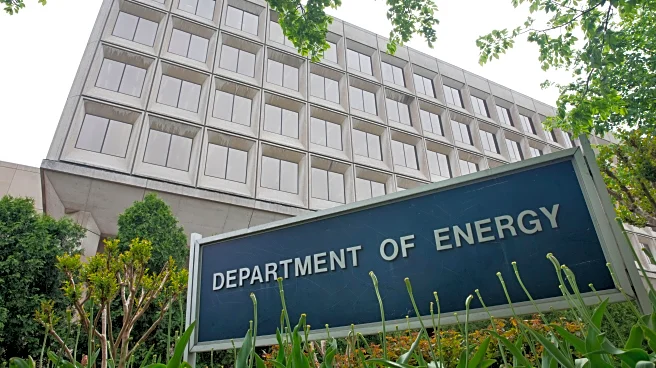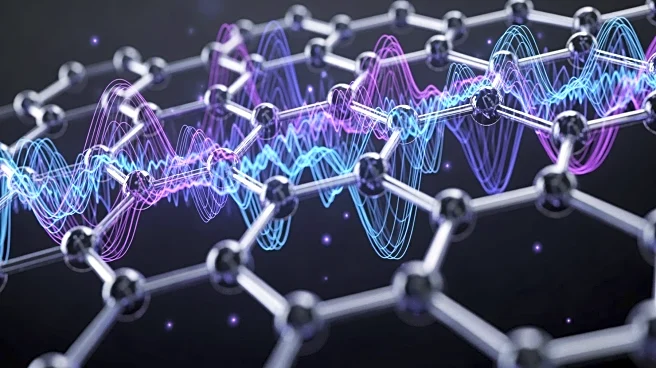What's Happening?
A recent study published in Nature has provided experimental evidence of i-wave superconductivity in the Weyl semimetal PtBi2. Researchers used ultrahigh-resolution angle-resolved photoemission spectroscopy
(ARPES) to map the superconducting gap along PtBi2’s topological Fermi arcs, revealing a rare sixth-order pairing symmetry. This superconductivity is exclusive to the surface of PtBi2, while the bulk remains metallic, making it a unique platform for studying unconventional pairing symmetry and topological surface states. The study marks the first spectroscopic confirmation of superconductivity beyond d-wave, with the superconducting gap showing strong anisotropy and temperature-dependent behavior. The findings are supported by density functional theory and Bogoliubov de Gennes slab calculations, which verify the observed anisotropy and node positions.
Why It's Important?
The discovery of i-wave superconductivity in PtBi2 is significant for the field of quantum materials, as it opens new avenues for exploring topological superconductivity. The presence of Majorana modes on the surface of PtBi2 could have implications for quantum computing, although the metallic bulk currently limits practical applications. The study suggests strategies for isolating Majorana modes, such as using ultrathin films or engineered heterostructures. This research positions PtBi2 as a powerful model system for probing unconventional superconductivity and could lead to advancements in quantum computing technologies.
What's Next?
Future research may focus on isolating the Majorana modes in PtBi2 by reducing the influence of bulk carriers or enhancing the superconducting properties of the surfaces through engineered heterostructures. Controlled breaking of time-reversal symmetry could potentially produce chiral or corner-localized modes suitable for device architectures. The study encourages further exploration of topological quantum materials defined by high-order pairing symmetries, potentially leading to new quantum computing applications.
Beyond the Headlines
The study of PtBi2’s superconductivity highlights the complex interplay between topological surface states and unconventional pairing symmetries. The presence of Majorana modes on the surface suggests potential for novel quantum computing architectures. The research also underscores the importance of understanding the fundamental properties of quantum materials, which could lead to breakthroughs in technology and materials science.













